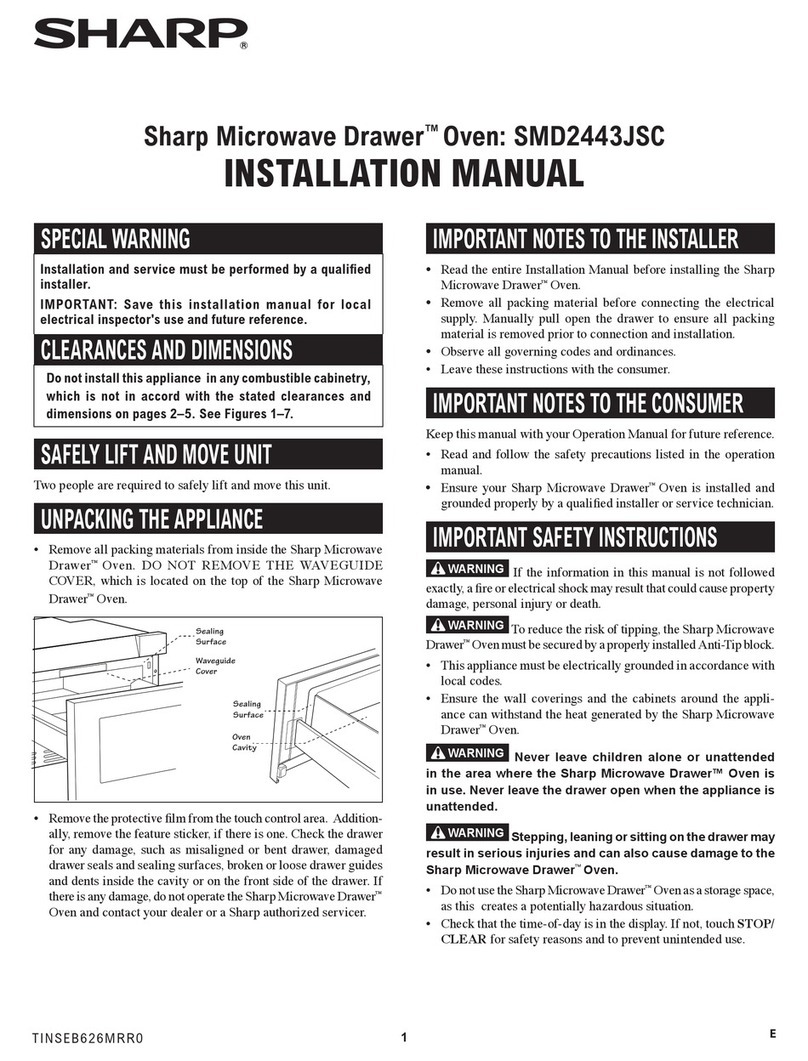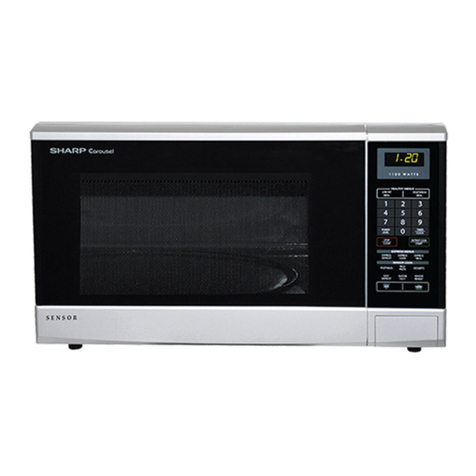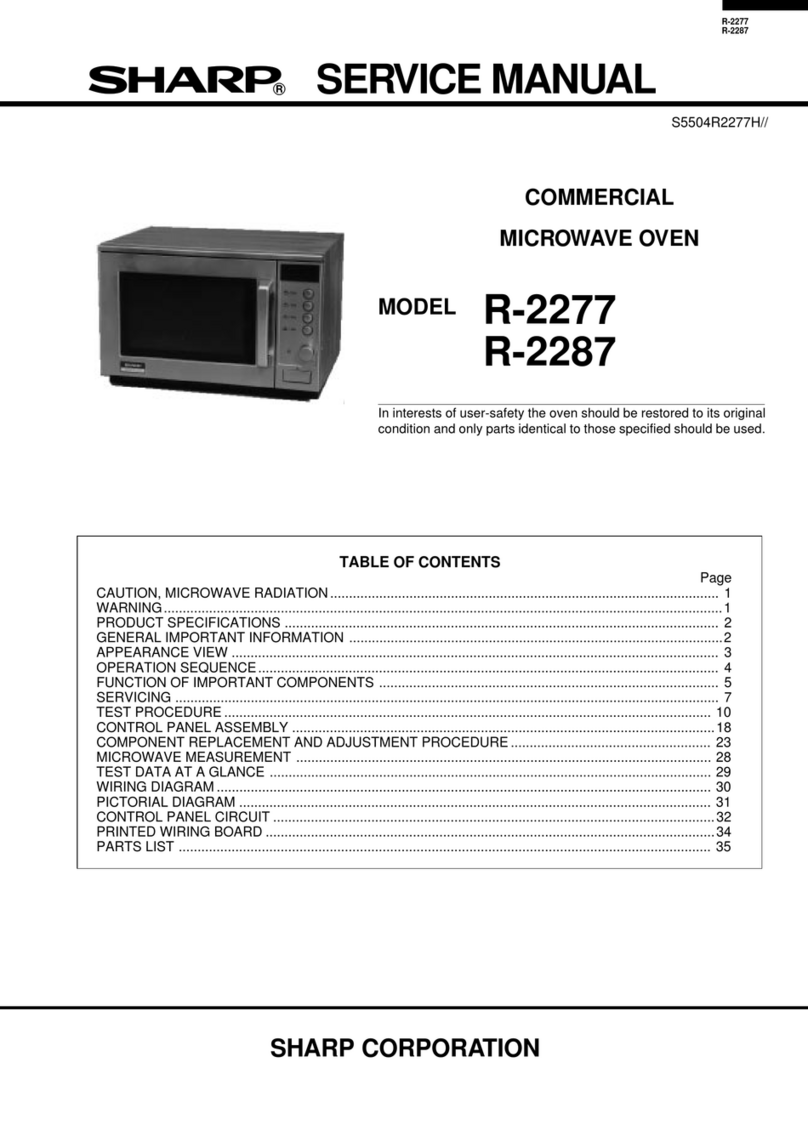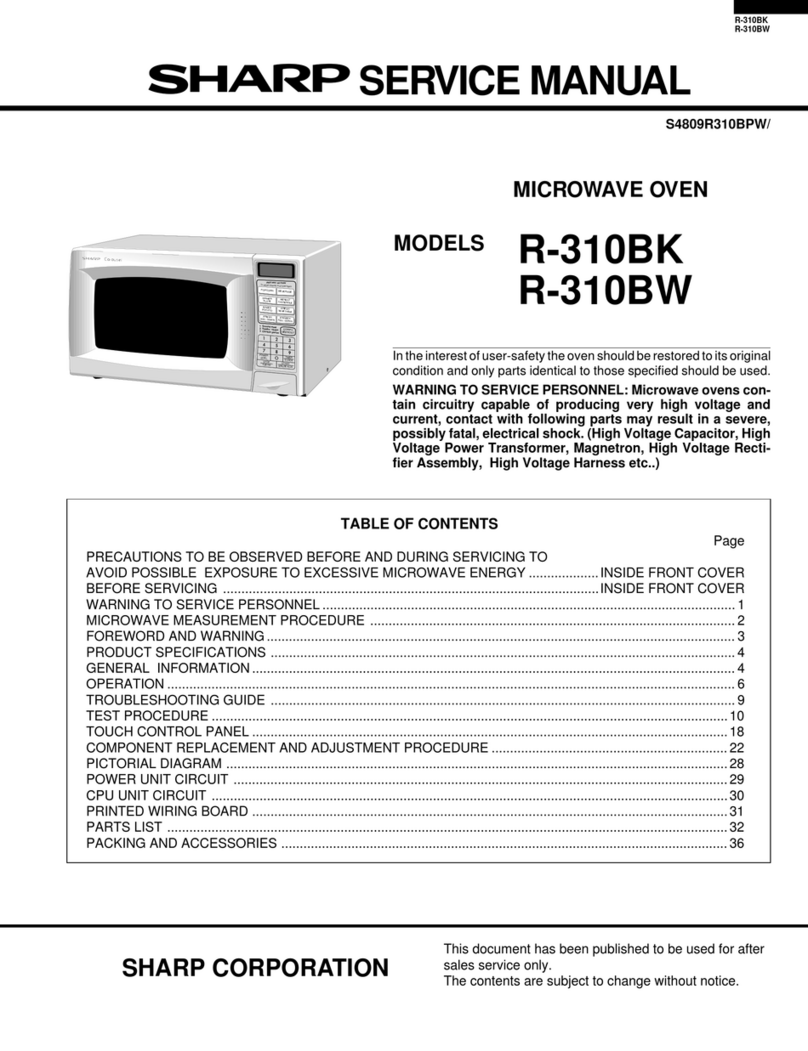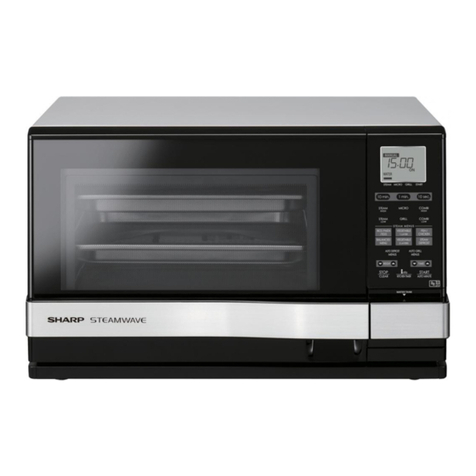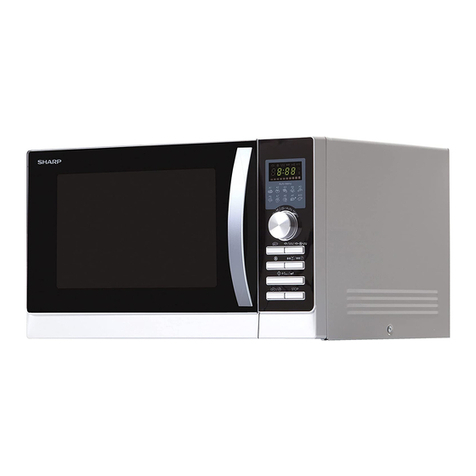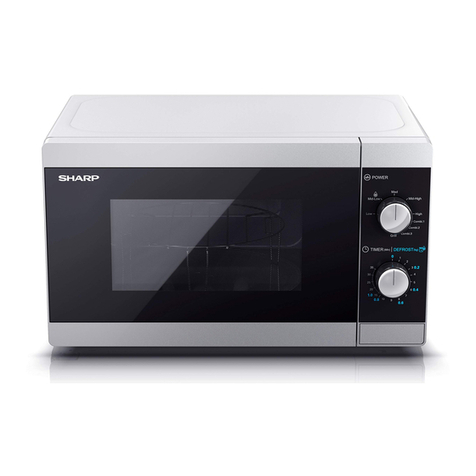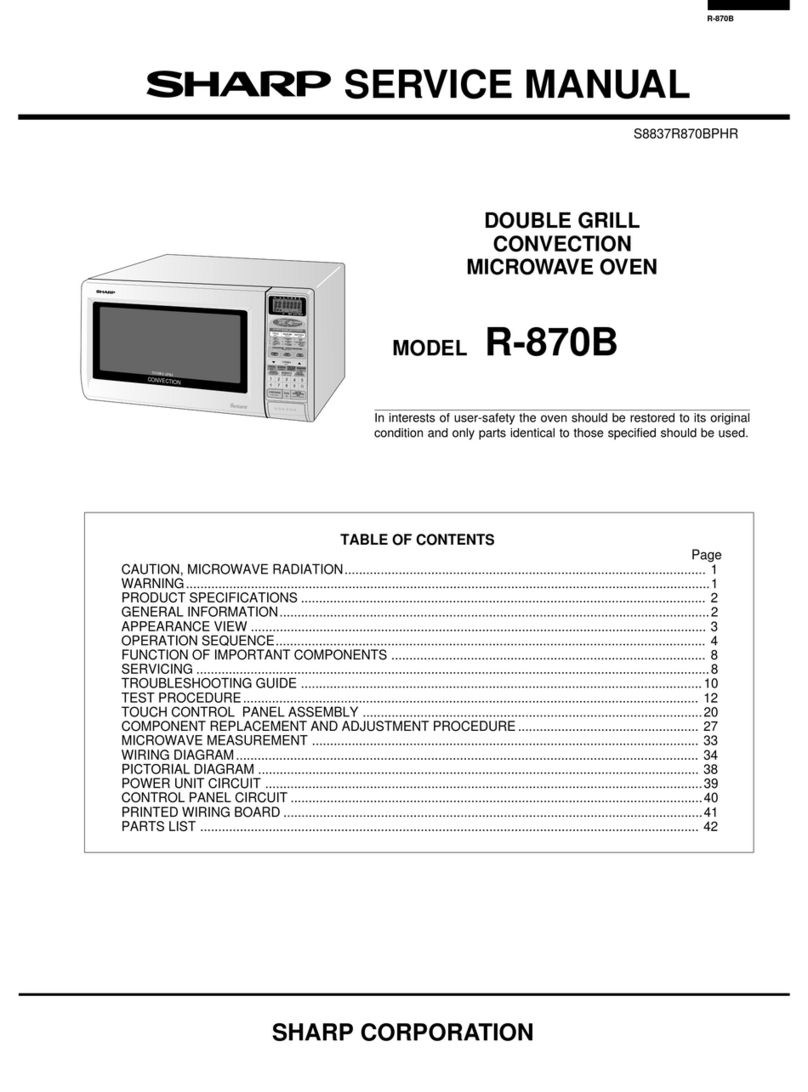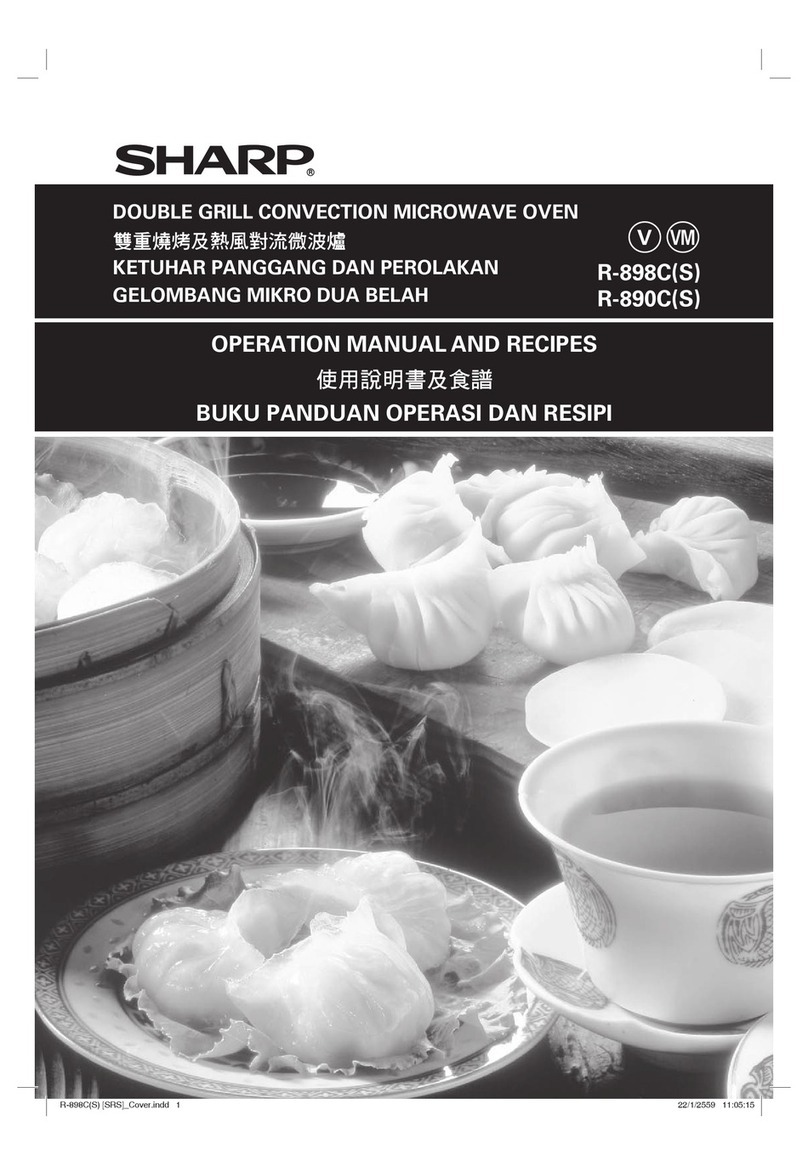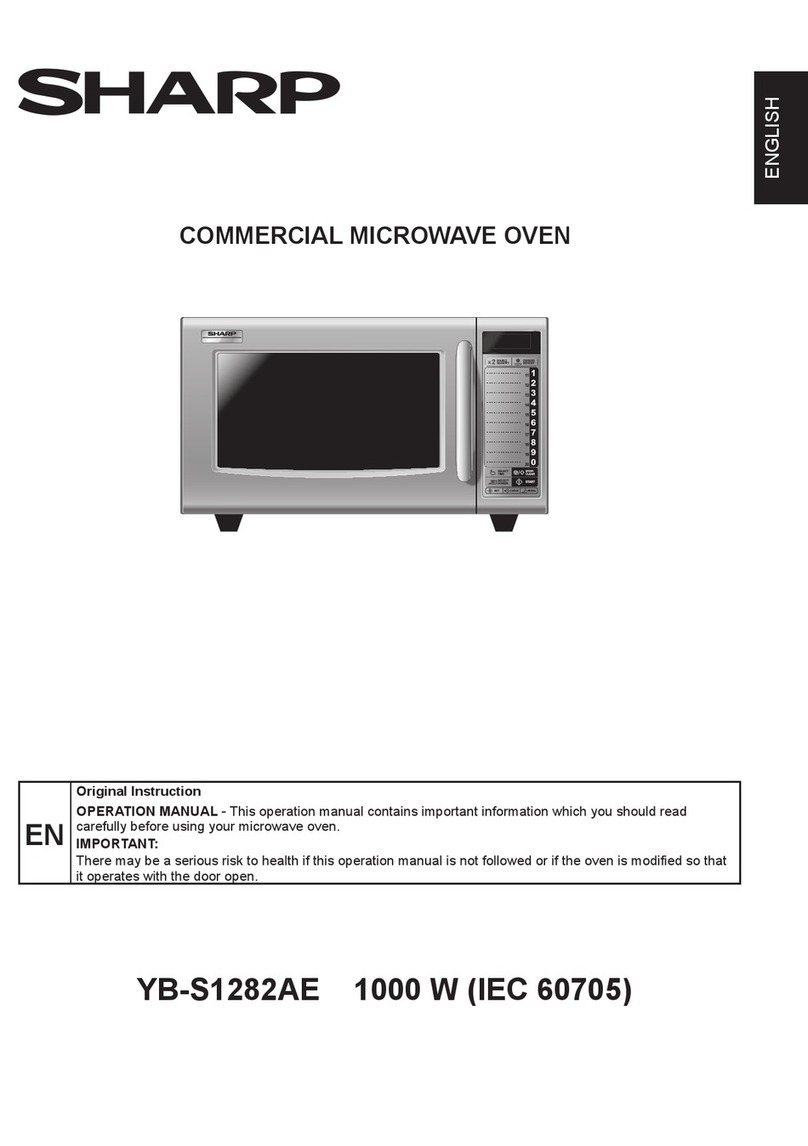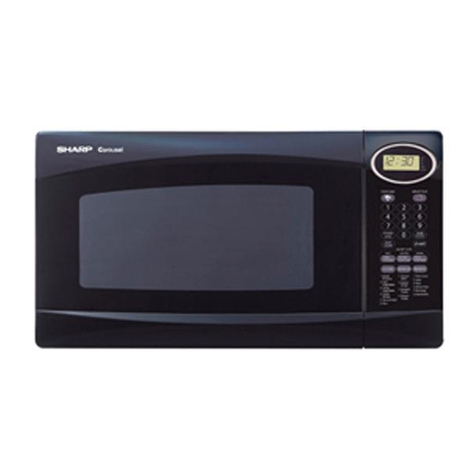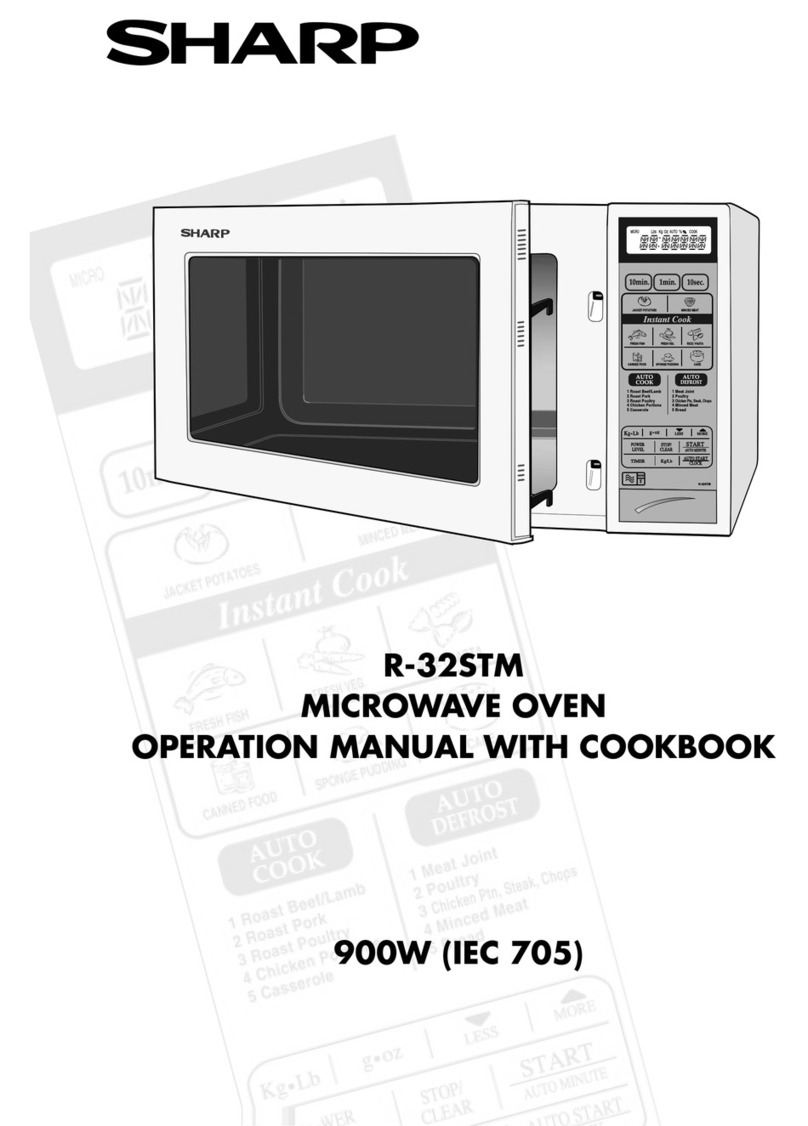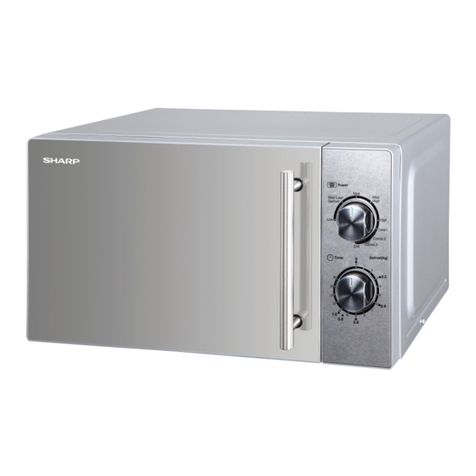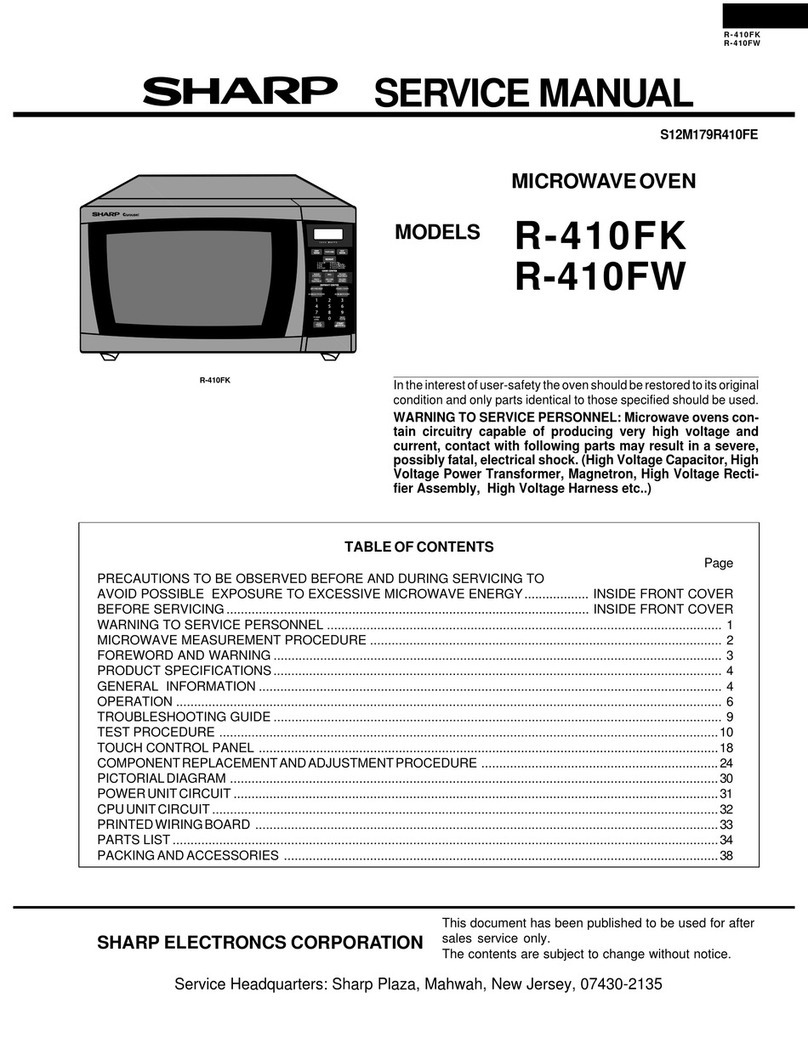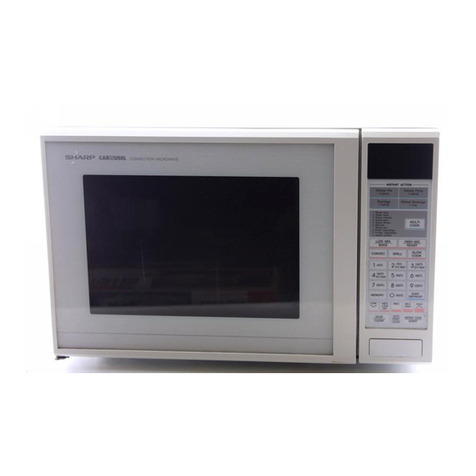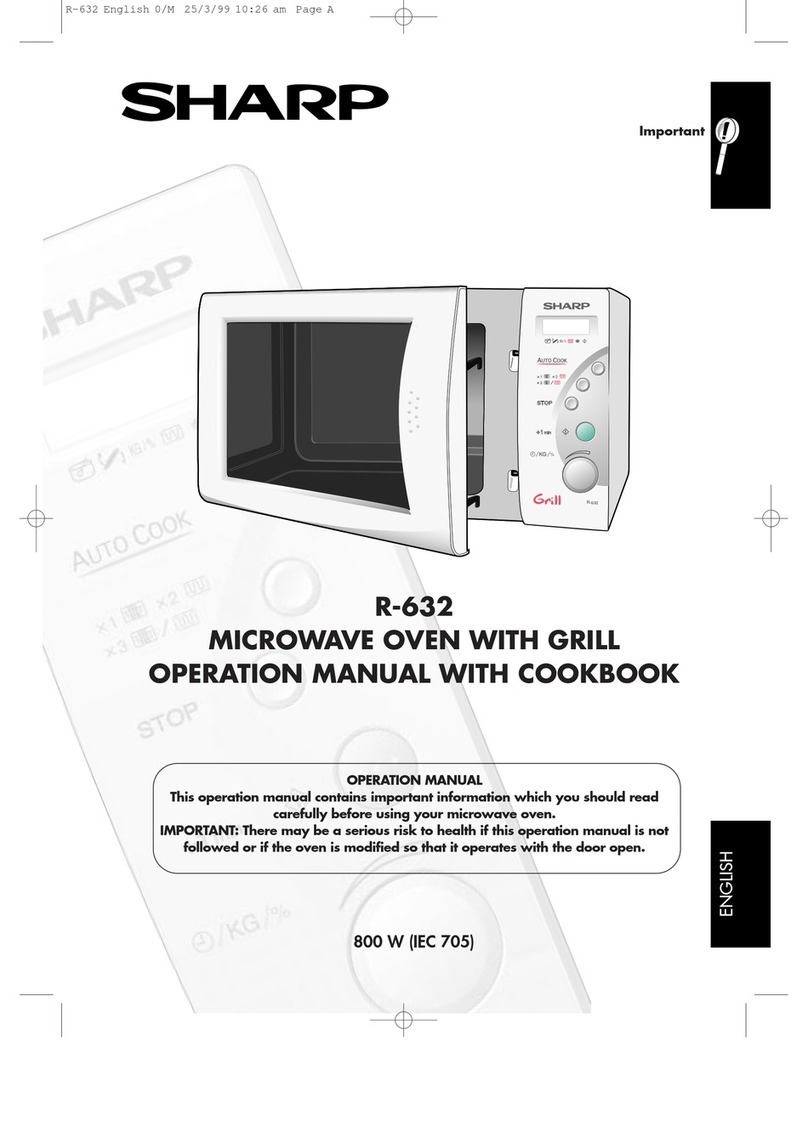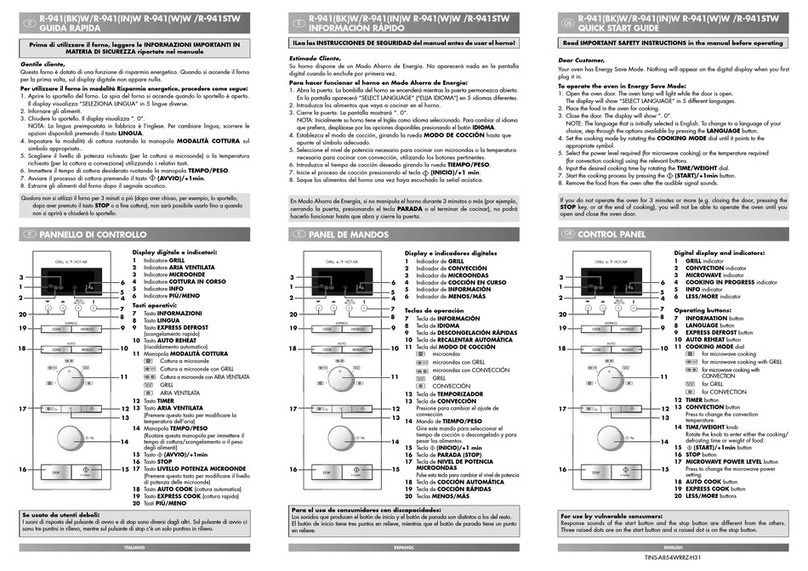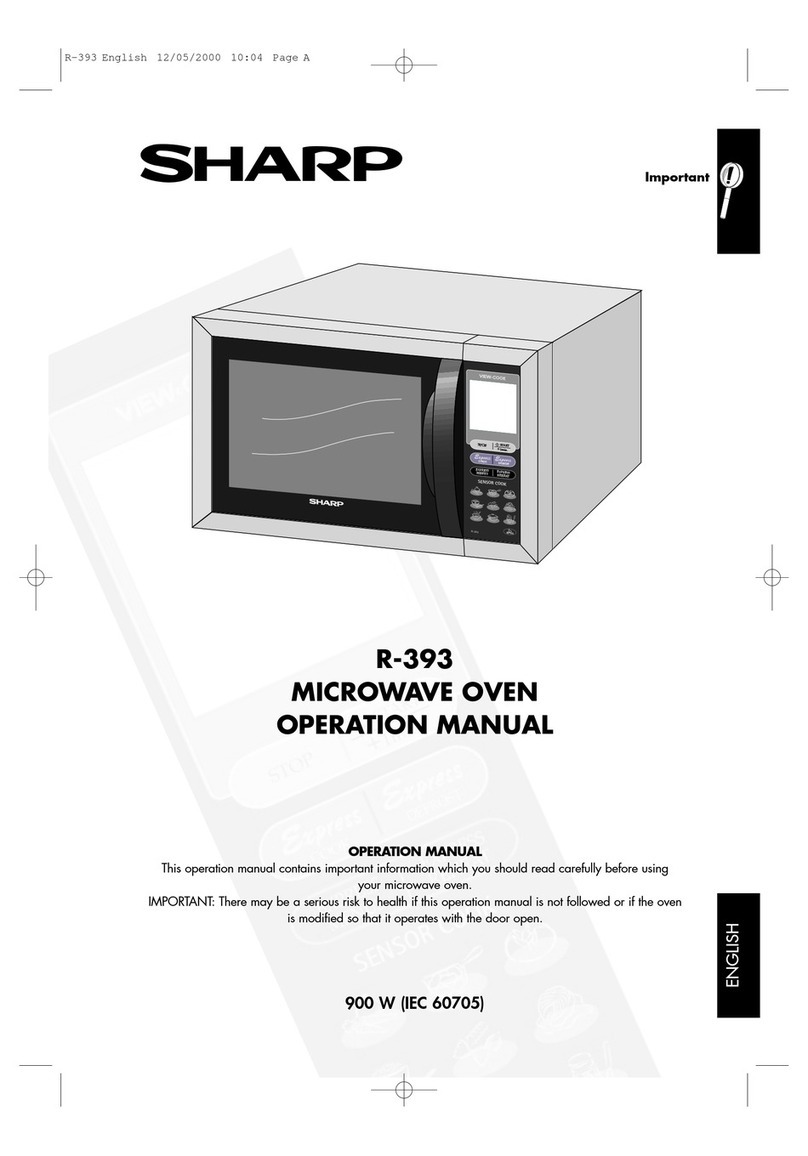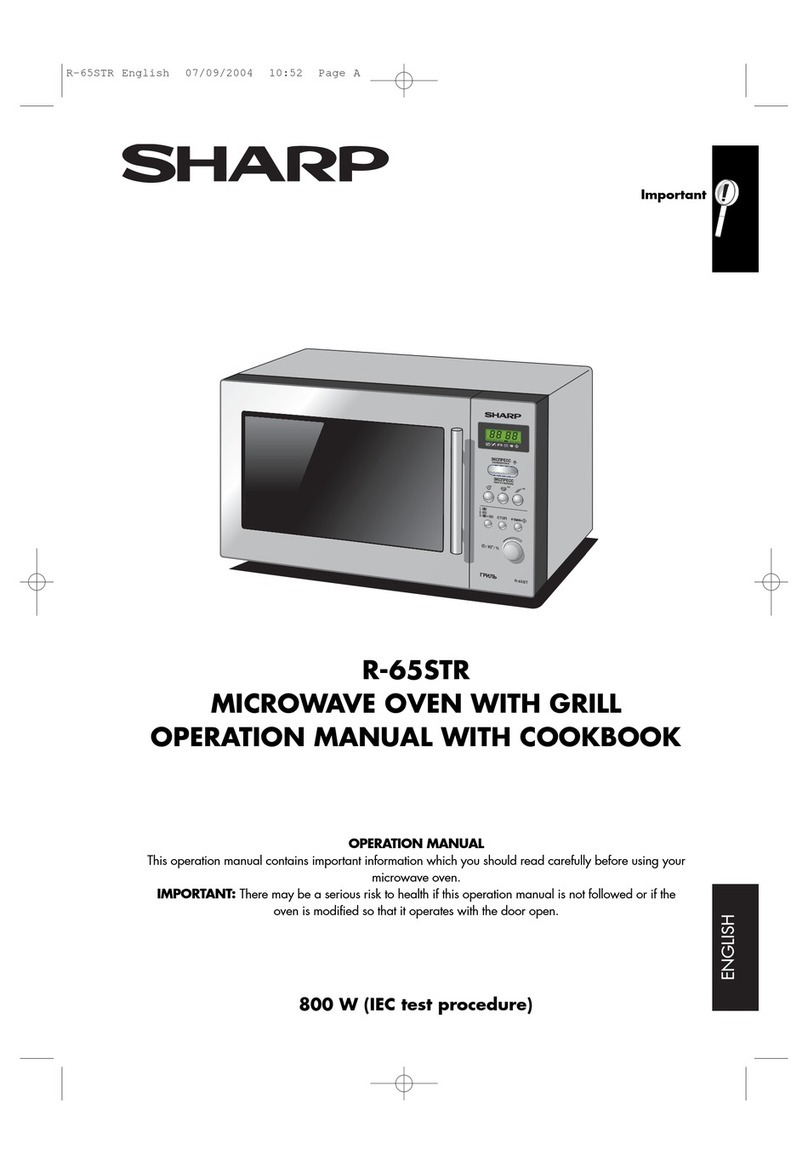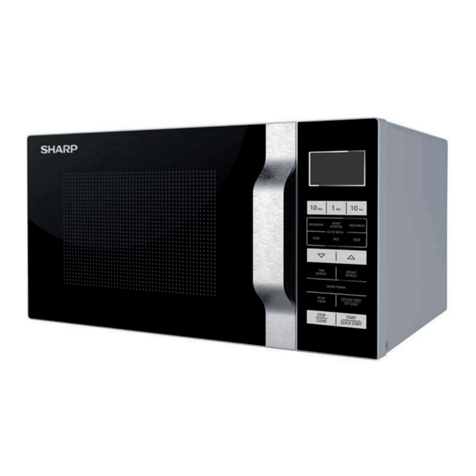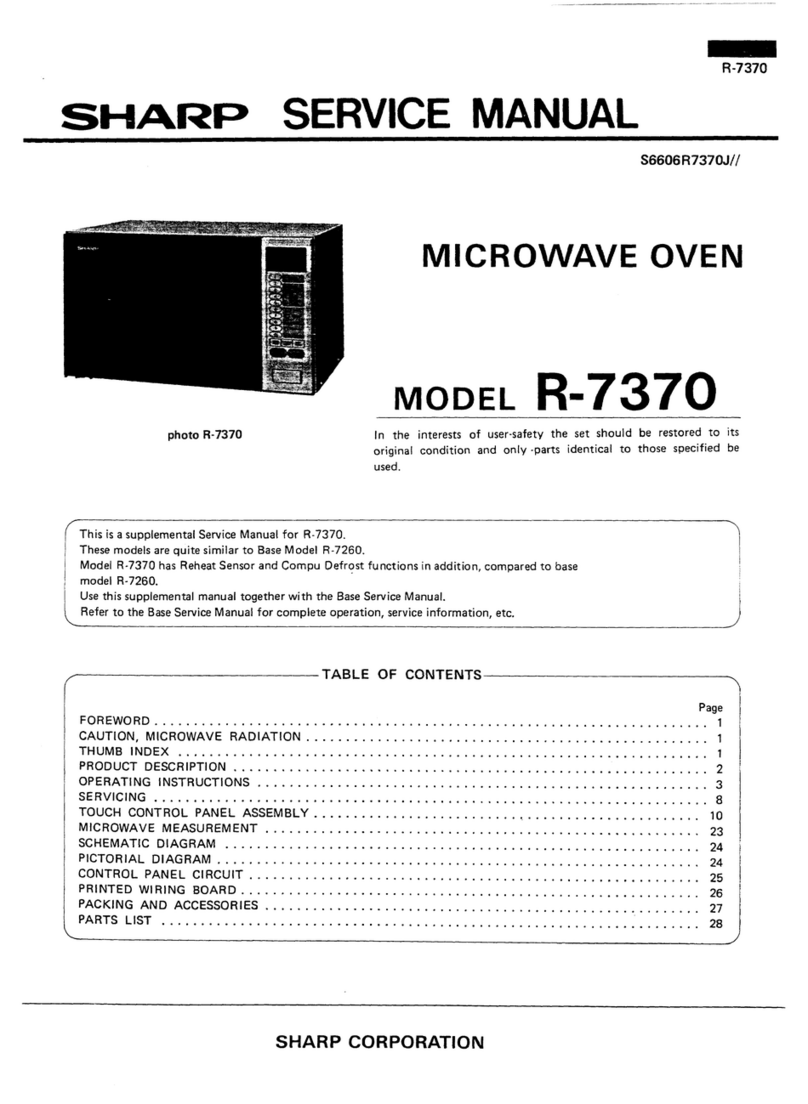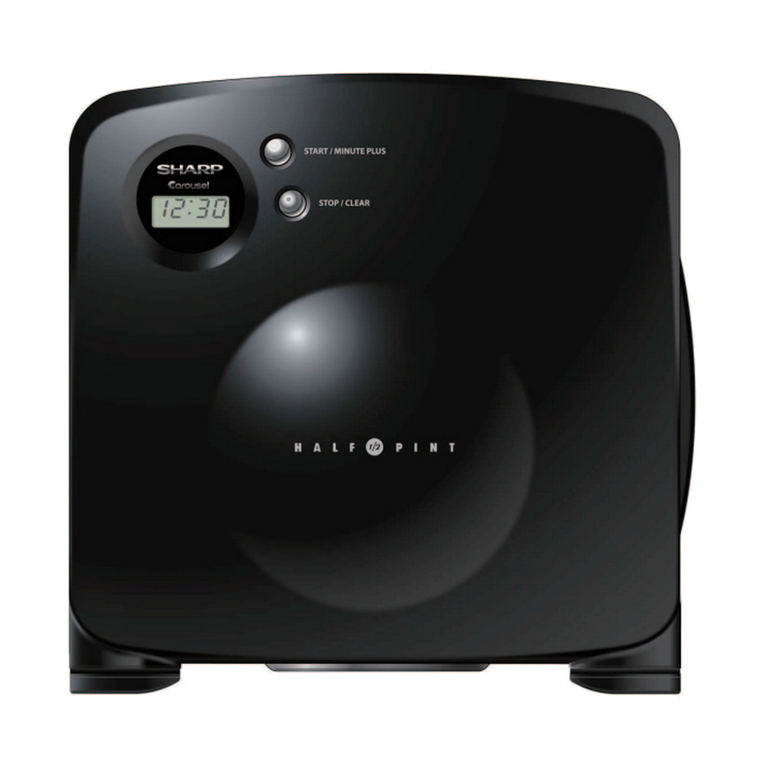R990K(W)
5 – 1
R990K(W) Service Manual
CHAPTER 5. OPERATION SEQUENCE
The following is a description of component functions during oven
operation.
Relay and Components Connection
RELAY CONNECTED COMPONENT
RY1 Oven lamp/ Turntable motor
RY2 Power transformer
RY3 Convection heater
RY4 Damper motor
RY5 Convection motor
RY6 Fan motor
[1] OFF CONDITION
Closing the door activates all door interlock switches: upper latch
switch, lower latch switch and stop switch. (In this condition, the moni-
tor switch contacts are closed.) When oven is plugged in a wall outlet
(230 - 240V, 50Hz), rated voltage is supplied to the control unit.
Figure O-1 on page 12-1
1. The display flashes “SHARP”, “MICRO-”, “WAVE”,'OVEN”.
To set any programmes or set the clock, you must first touch the
STOP/CLEAR pad.
“ : “ appears in the display and the time counts up every minute.
NOTE: When the oven door is opened, the oven lamp comes on at
this time.
2. A signal is input to the control unit, energizing the coil of shut-off
relay (RY4).
RY4 contacts close, completing a circuit to the damper motor. The
damper motor now operates moving the damper to the open posi-
tion, thereby closing the contacts of damper switch inputs a signal
to the control unit.
The coil of relay RY4 is de-energized, opening its contacts, thereby
turning off the damper motor.
[2] MICROWAVE COOKING CONDITION
1. HIGH COOKING
Enter cooking time by pressing the NUMBER pads and then select
microwave cooking and power level by pressing the POWER LEVEL
pad. When the START pad is touched, the following operations occur:
1. The contacts of relays are closed and components connected to
relays are turned on (RY1, RY2, RY6).(Figure O-2)
Figure O-2 on page 12-1
2. Rated voltage is supplied to the primary winding of the power trans-
former. The voltage is converted to about3.3 volts A.C. output on
the filament winding and high voltage of approximately 2260 volts
A.C. on the high voltage winding.
3. The filament winding voltage (3.3 volts) heats the magnetron fila-
ment and the high voltage (2260 volts) is sent to the voltage dou-
bling circuit.
4. The 2450 MHz microwave energy produced in the magnetron gen-
erates a wave length of 12.24 cm. This energy is channelled
through the waveguide (transport channel) into the oven cavity,
where the food is placed to be cooked.
5. Upon completion of the cooking time, the power transformer, oven
lamp, etc. are turned off and the generation of microwave energy is
stopped. The oven will revert to the OFF condition.
6. When the door is opened during a cook cycle, the monitor switch,
upper latch switch, lower latch switch and stop switch are activated
with the following results.The circuits to the turntable motor, cooling
fan motor and high voltage components are de-energized, the oven
lamp remains on and the digital read-out displays the time still
remaining in the cook cycle when the door was opened.
7. The monitor switch is electrically monitoring the operation of the
upper latch switch and lower latch switch and is mechanically asso-
ciated with the door so that it will function in the following
sequence.
1) When the door opens from a closed potion, the upper latch
switch and the lower latch switch open their contacts, and then
the monitor switch contacts close.
2) When the door is closed, from the open position, the monitor
switch contacts first open, and then the contacts of the upper
latch switch and lower latch switch must be closed.
If the common and normal open contacts of upper latch switch and
the lower latch switch fail with their contacts closed when the door
is opened, the closing of the monitor switch contacts will form a
short circuit through the fuse, upper latch switch and the lower latch
switch, causing the monitor fuse to blow.
2. MEDIUM HIGH, MEDIUM, MEDIUM LOW, LOW
COOKING
When variable cooking power is programmed, the rated voltage is sup-
plied to the power transformer intermittently through the contacts of
the relay (RY2) which is operated by the control unit within a 32-sec-
ond time base. Micro-wave power operation is follows:
SETTING;
NOTE: The ON/OFF time ratio does not exactly correspond to the
percentage of microwave power, because approx. 3 seconds
are needed for heating up the magnetron filament.
[3] CONVECTION COOKING CONDITION
1. PREHEATING CONDITION
Press the PREHEAT pad and then select preheating temperature by
pressing the temperature pad. When the START pad is touched, the
following operations occur:
1. The coil of shut-off relays RY1+RY5+RY6 are energized, the oven
lamp, cooling fan motor, turntable motor and convection motor are
turned on.
2. he coil of relay (RY4) is energized by the CPU unit.The damper is
moved to the closed position, opening the damper switch contacts.
The opening of the dampers witch contacts sends a signal to the
LSI on the CPU unit de-energizing the relay (RY4) and opening the
circuit to the damper motor.
3. The coil of heater relay (RY3) is energized by the CPU unit and the
main supply voltage is added to the convection heater.
4. When the oven temperature reaches the selected preheat temper-
ature, the following operations occur:
1) The heater relay (RY3) is de-energized by the CPU unit temper-
ature circuit and thermistor, opening the circuit to the convection
heater.
VARI MODE ON TIME OFF TIME
HIGH (100% power) 32 sec. 0 sec.
MED HIGH (approx. 70% power) 24 sec. 8 sec.
MED (approx. 50% power) 18 sec. 14sec.
MED LOW (approx. 30% power) 12 sec. 20 sec.
LOW (approx. 10% power) 6 sec. 26 sec.
